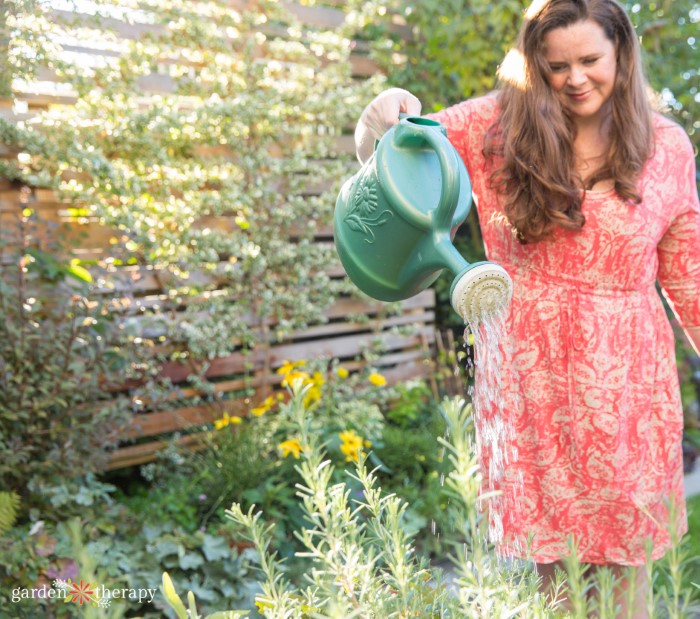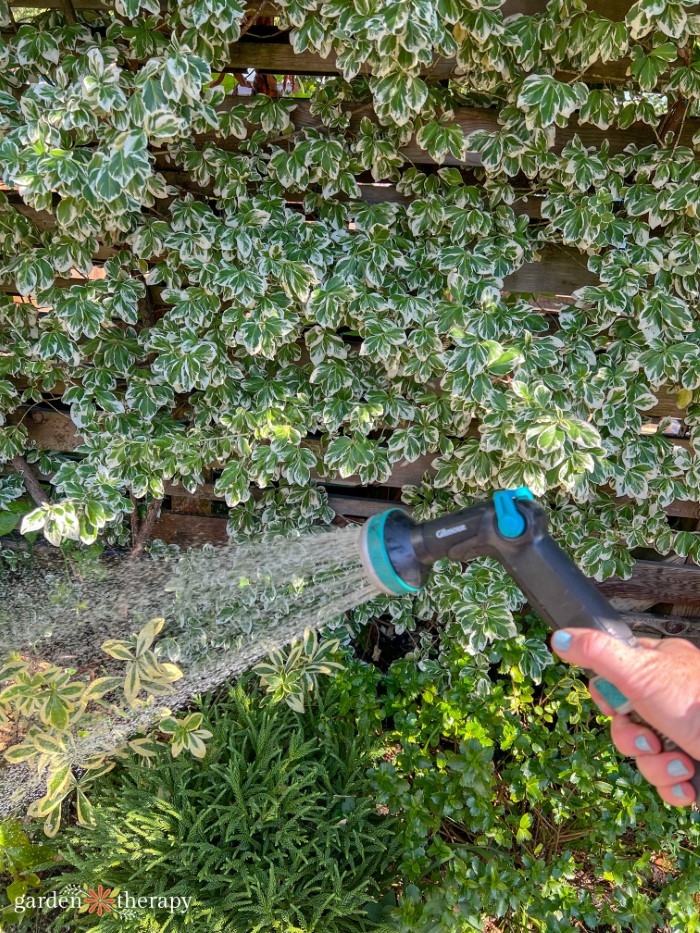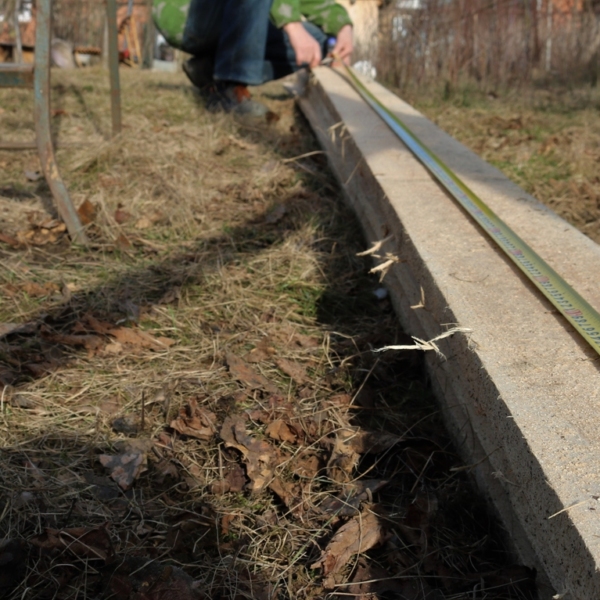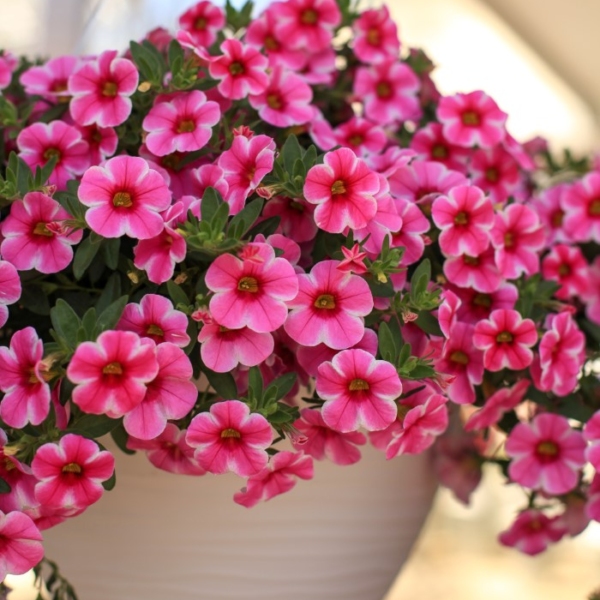Have water, will thrive. We must do our part in limiting our water usage when it comes to our backyard plantings. Try these seven ways to reduce water usage through a diverse effort of water catchment systems and clever planting.
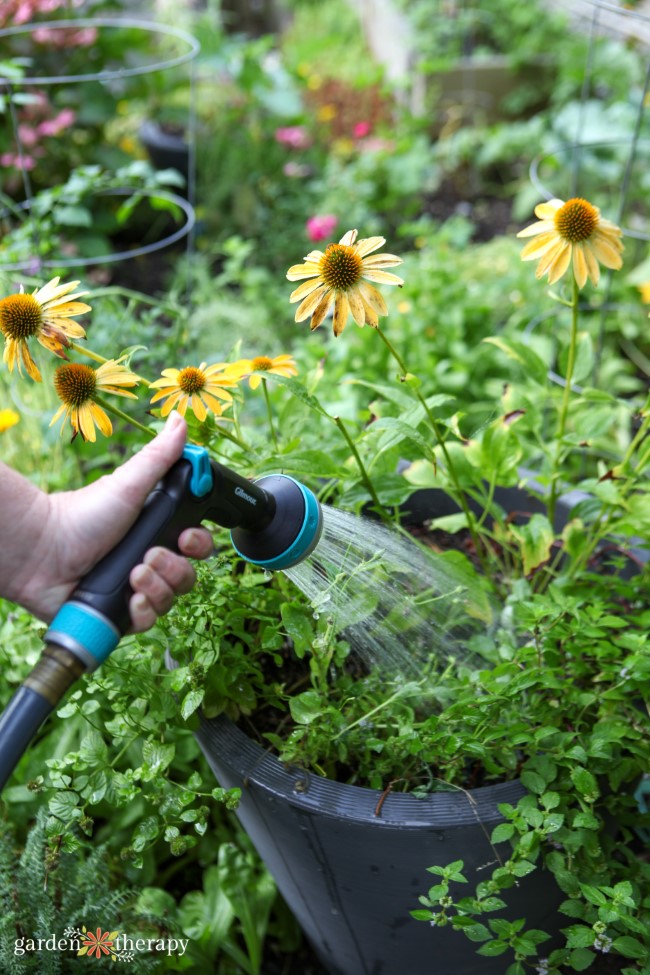
In our current environmental crisis, we’re all trying to do a little bit more. From encouraging biodiversity to helping support local wildlife, these are all small switches that hold the power to create big change.
Reducing your city water usage is another step to practicing sustainable, regenerative gardening.
For over 25 years, I’ve lived in Vancouver, British Columbia, known for its gray skies and relentless rainy days. During this time, I’ve witnessed a drastic change in water preserves, with caches not large enough to fulfill the city’s needs through the summer months.
Coupled with the raging wildfires that plague each summer season, doing our part to limit city water usage is more crucial than ever.
Today, I’m sharing 7 ways to reduce water usage with storage hacks that work for any yard or garden of any size.

Principles of Efficient Water Use
Before we get started, I thought it might be useful to review the basics of what we’re trying to achieve. I outline these ideas in my book, The Regenerative Garden, as the foundation for efficient water use.
- Step 1: Capture and store rainwater for garden irrigation.
- Step 2: Recycle this water as many times as possible.
- Step 3: Know your local water budget and stay within it. Never use more than your rainfall.

7 Ways to Reduce Your City Water Usage
To reduce your city water usage, you’ll need to diversify your efforts. A combination of catching, storing, recycling, and smart planting can help you reduce your city water usage in a major way.
These are a few strategies to get you started.
1. Get Rid of Thirsty Lawns
Lawns use a truly outrageous amount of water. While they have become the norm in most communities, there are plenty of lawn alternatives that use far less water.
If you don’t need your lawn, replace it with a low-maintenance ground covers like micro clover or a native, drought-tolerant grass species. Many seed companies have an eco-lawn alternative that you can try out.
I’m in the midst of revamping the lawn at my new house with a new alternative lawn mix. Check it out below.
2. Plant Native and Drought-Tolerant Plants
Xeriscape principles, or conserving water through landscaping, go beyond the lawn.
The plants you choose to include in your garden can majorly affect your city water usage.
Choose plants that are native to your area, as they can survive on natural rainfall with little to no supplemental watering. Choosing drought-tolerant plants will also help you through the summer months when rainfall lessens.

3. Capture and Store Rainwater
One of the basic principles of sustainable water use is capturing and storing rainfall for the drier months.
Rain barrels with overflow pipes directly to your garden are an efficient way to capture rainfall. Barrels can be made from plastic, metal, or wood drums—all food-safe materials.
An average rain barrel can hold 50 gallons of rainwater, enough to water 80 square feet of garden.
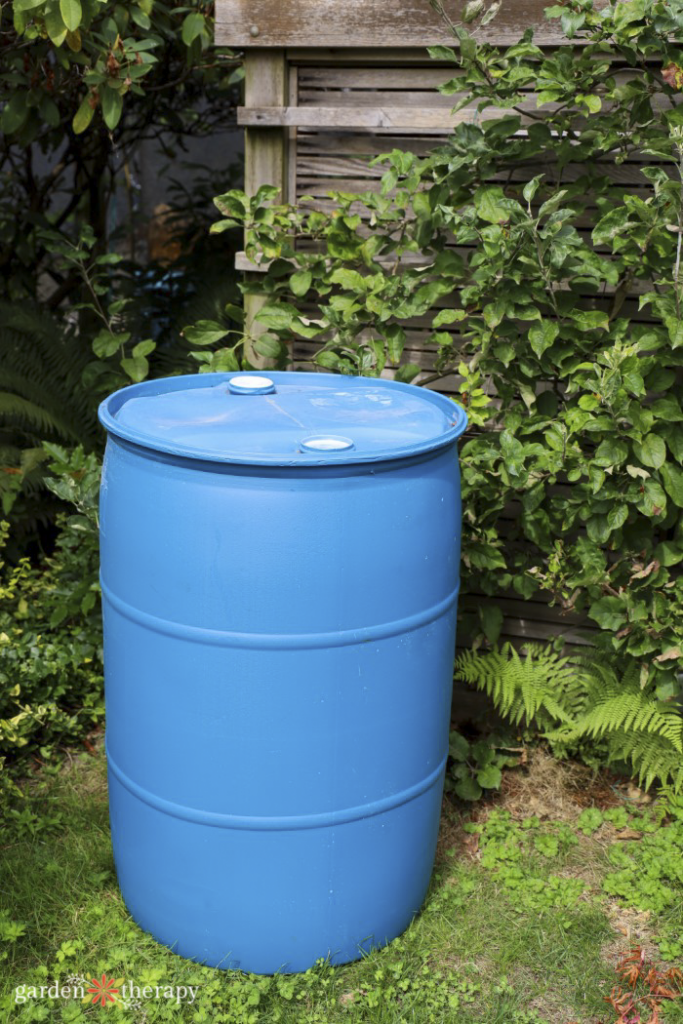
4. Redirect Drain spouts
Have plants that love extra water? You can redirect your drain spouts to feed directly into your garden, giving your plants the extra water they crave without digging into the city’s water supply.
Do note that not all roof runoff is recommended for our gardens, depending on the material of the roof. Roofs made from non-porous metal are ideal, while untreated wood shingle roofs are also acceptable.
Avoid roof runoff from asphalt, rubber, and galvanized zinc roofs.

5. Build a Rain Garden
Designing a rain garden sounds complicated, but it’s surprisingly low-maintenance and simple in concept. These gardens are designed to filter and release stormwater runoff, keeping water to the soil and creeks.
Rain gardens use moisture-loving plants that act as biofilters to purify the water, along with drought-tolerant plants with deep roots.
These gardens range from simplistic to elaborate, redirecting natural water sources through drain spouts, gravel troughs, and an overflow area packed with rocks.
6. Use an Olla Water Catchment System
Self-watering planters are an efficient way to save on city water usage while also saving you time.
Ollas are one of my favourite self-watering systems; they’ve been used for thousands of years to provide slow irrigation and deep root watering.
This ancient watering practice teaches plants to reach down and find this water source, limiting the need for supplemental watering.
You can even attach your ollas to a rain barrel, drawing water when needed.
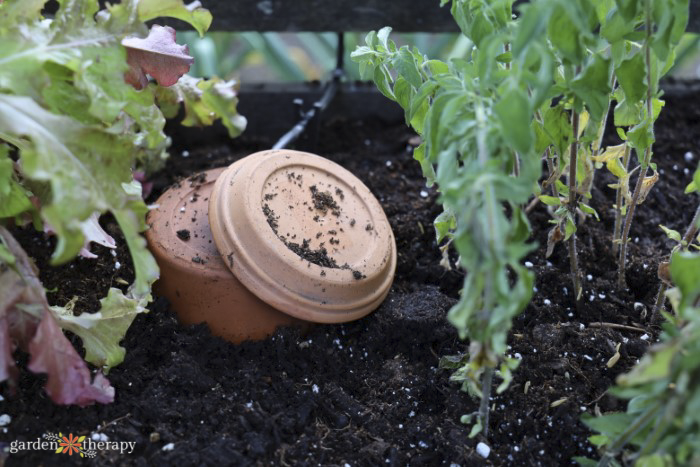
7. Build a Wicking Bed
Want to take self-watering to the next level? A wicking bed is essentially a giant self-watering container. It may resemble a classic raised bed, but there’s much more below the surface.
These beds have a water reservoir under the soil, dramatically reducing the need for supplemental watering.
The reservoir is made with an impermeable barrier to hold water, gravel to store the water, and drainage pipes for water flow; it can be filled manually, by rainfall, or through overflow spouts.
Through the hottest summer months, your wicking bed will only need a weekly top-up, with less manual care through the rest of the year.

FAQ About Reducing City Water Usage
Have more questions about reducing your city water usage? These are the questions I get the most. If I don’t answer your question here, please leave it for me in the comments below.
How can I reduce my city water usage in a small yard?
It’s easy to have grand plans for water conservation when you have acres of space to work with. But when you’re dealing with a small city yard, you may feel more limited.
The good news is that all of these water-reduction strategies are designed to work in any space, with scale options for any yard.
A single rain barrel with redirected drain spouts is small-space-friendly, and can make a major difference in your water usage.
Planting lawn alternatives and native or drought-tolerant plants is another useful solution, possible in any size garden.
What are the best drought-tolerant plants for my garden?
I recommend choosing plants that are native to your area; they use the least amount of water because they are equipped to survive in your specific region.
With this said, there are plenty of drought-tolerant plants that would make good additions to your garden. Some of my favourites include agave, aster, columbine, delphinium, echinacea, lavender, phlox, sedum, statice, sunflower, yarrow, and zinnias. Find the full list in this post.
